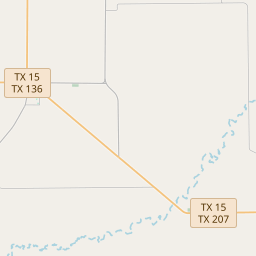Gruver Cemetery
Historical marker location:






GRUVER CEMETERY
IN 1907, JOSEPH HEZKIAH GRUVER (1863-1962), HIS WIFE, ADDIE REED GRUVER, AND THEIR SON, LAWRENCE, MOVED FROM MISSOURI AND SETTLED IN THIS AREA. A POST OFFICE WAS ESTABLISHED IN 1927 AND SOON BUSINESSES FOLLOWED. IN 1929, AT THE REQUEST OF CLARENCE WINDER, MR. J.B. DULIN DONATED TEN ACRES OF LAND TO BE KNOWN AS GRUVER MEMORIAL PARK, NOW GRUVER CEMETERY. ADDITIONAL ACREAGE WAS ADDED BY CECIL AND MARGARET RALSTON IN 1970. ON MARCH 9, 1929, WILLIE A. WINDER, CLARENCE’S MOTHER, BECAME THE FIRST PERSON BURIED IN THE CEMETERY. THE LANDSCAPE OF THE CEMETERY IS TRADITIONAL WITH JUNIPER TREES SURROUNDING GRANITE AND MARBLE HEADSTONES THAT DOCUMENT THE HISTORY OF THE GRUVER AREA
As one of the most visible programs of the Texas Historical Commission (THC), historical markers commemorate diverse topics in Texas history, including: the history and architecture of houses, commercial and public buildings, religious congregations, and military sites; events that changed the course of local and state history; and individuals who have made lasting contributions to the state, community organizations, and businesses.
More history nearby
The first domed stadium in the world, the Astrodome, was built in Houston in 1965 and hosted numerous sporting events and concerts over the years.
In the 1870s, Hansford County experienced its first wave of settlement as ranchers and farmers began to establish homesteads in the area. The arrival of the railroad in 1887 further spurred growth and development, as it provided a vital link for transporting goods and people. The county was officially organized in 1889 and named after John M. Hansford, a Texas congressman who was known for his support of the Texas Panhandle region.
The early settlers faced numerous challenges, including droughts, harsh weather conditions, and conflicts with Native American tribes. However, their perseverance paid off, and the county's agriculture and ranching industries began to thrive. Wheat, corn, and cotton became important crops, while cattle ranching became a prominent livelihood for many residents.
In the 20th century, Hansford County continued to evolve with advancements in technology and infrastructure. The discovery of oil in the 1920s brought a new wave of economic growth and prosperity to the area. Today, Hansford County is a thriving community that celebrates its western heritage and rich agricultural traditions while embracing modern industries and opportunities for growth.
Hansford County Timeline
This timeline provides a glimpse into the major events and milestones that have shaped the history of Hansford County, Texas.
- 1876 - Hansford County is created and named after John M. Hansford, a Texas state congressman.
- 1880 - The first settlers begin arriving in the area, attracted by the availability of land for farming and ranching.
- 1886 - Hansford becomes an organized county with the establishment of county government.
- 1891 - The town of Hansford is established as the county seat.
- 1900 - The county's population reaches around 3,000, primarily engaged in agriculture and livestock raising.
- 1910 - The discovery of oil leads to an economic boom in the county.
- 1929 - The Great Depression hits Hansford County hard, resulting in economic hardships for the residents.
- 1950s - The discovery of natural gas reserves provides a boost to the county's economy.
- 1960s - The construction of Lake Marvin, a recreational reservoir, attracts tourists to the area.
- 1980s - The agriculture and energy sectors continue to dominate the county's economy.